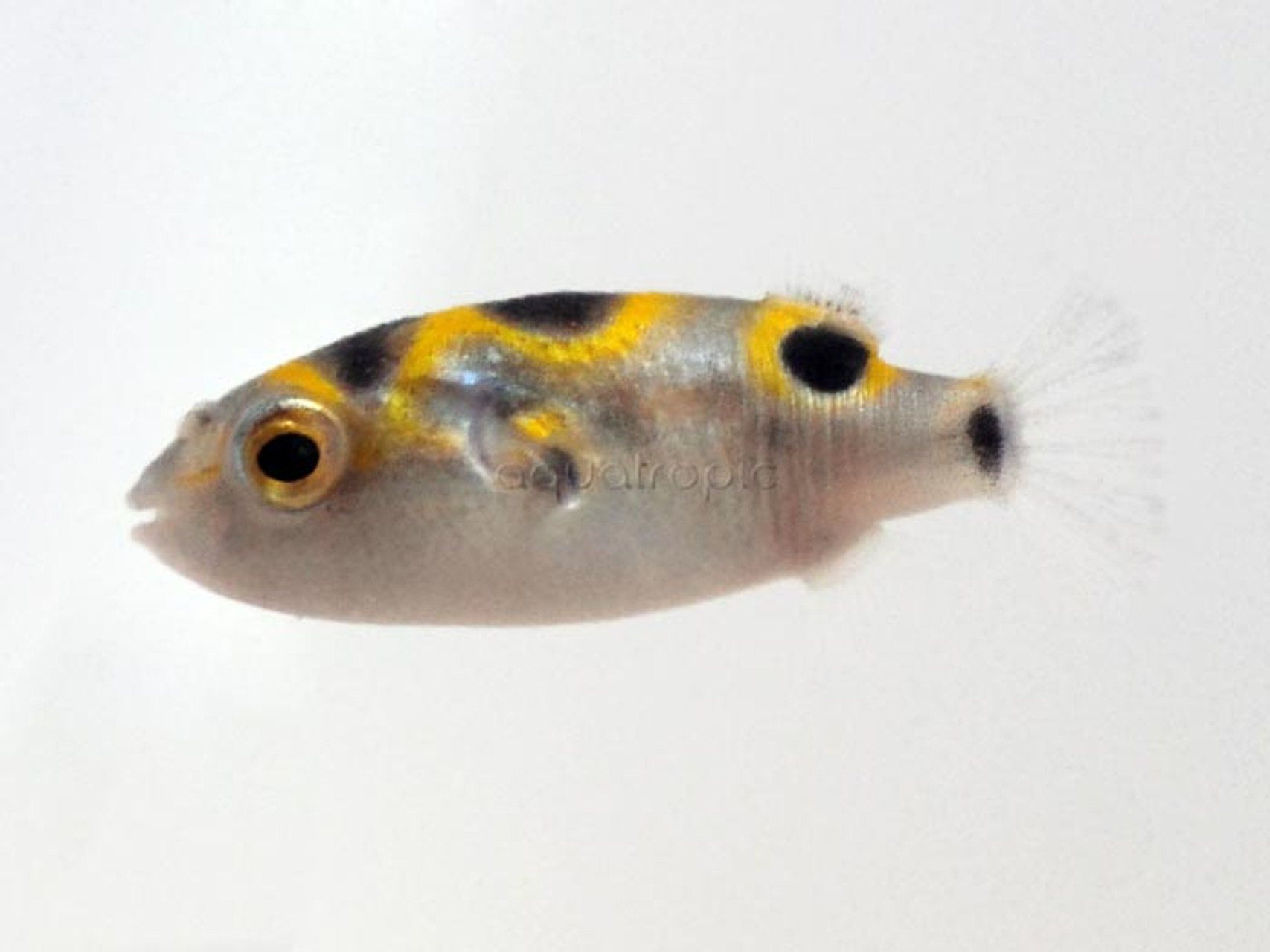Figure Eight Pufferfish (Tetraodon biocellatus)

Pufferfishes have long been a fan favorite among aquarists, thanks to their bizarre morphology and cheery personality. And one of the most recommendable species for freshwater and brackish aquariums is certainly the Figure Eight Pufferfish (Tetraodon biocellatus).
This colorful little fish originates from the estuaries and lower reaches associated with the Mekong River drainage, which includes parts of Cambodia, Indonesia, Malaysia and the nearby island of Borneo. Aquarium literature is often vague on precisely what conditions this species occurs in—freshwater or brackish—and what the ideal water parameters are for keeping it successfully in captivity. Scientific references are generally in agreement that T. biocellatus is in fact a primarily freshwater species. This correlates with observations by aquarists that have found this fish seems to do just fine in pure freshwater.
Interestingly, researchers have studied the ability of this fish (as well as the closely related Green Spotted Pufferfish D. nigroviridis) and found that a broad range of water conditions are tolerated—everything from soft, acidic waters (ph 6.5) to pure saltwater (and even hypersalinity!). To achieve this, the gills and kidneys are able to drastically alter their physiology, enabling the fish to consistently maintain a stable ionic balance.
If there is one knock against the Tetraodon pufferfishes, it is that they are exceptionally prone to developing Ichthyophthirius infections. And this is perhaps the strongest argument for keeping them in brackish conditions. Salt is a well-known remedy for treating ich, and, by keeping these fishes permanently in salted surroundings, the risk posed by this highly lethal parasite is essentially eliminated. Of course, it is perfectly possible to keep them in freshwater, so long as good quarantine is practiced with any livestock additions to the tank.
T. biocellatus is relatively peaceful as far as pufferfishes go, but it is still a poor idea to attempt mixing it with slower-moving tankmates, especially those with longer fins which might get nipped. Bad choices would include Bettas, Angelfishes, Gouramis and any Catfish with prominent Barbels, while some good options could include many of the livebearers, smaller Cichlids, larger species of Barb and Tetra, as well as Rainbowfishes. It’s also possible to keep multiple specimens of T. biocellatus together in a suitably large aquarium.
It is vital to feed this fish crunchy foods which will replicate the natural diet of Mollusks and Crustaceans and help to wear down the teeth. A good variety of whole Krill, Snails and Bivalves will get the job done.
Lastly, regarding the correct name of this fish, a recent change occurred in a review of Southeast Asian fishes, resulting in the older name for this fish, Tetraodon biocellatus, is being replaced by Dichotomyctere ocellatus. This was due to studies which have shown that the African Pufferfishes are most closely related to the type species for Tetraodon, while the Asian Pufferfishes are more distantly related. Most aquarium and internet references are still out of date with regards to this change.